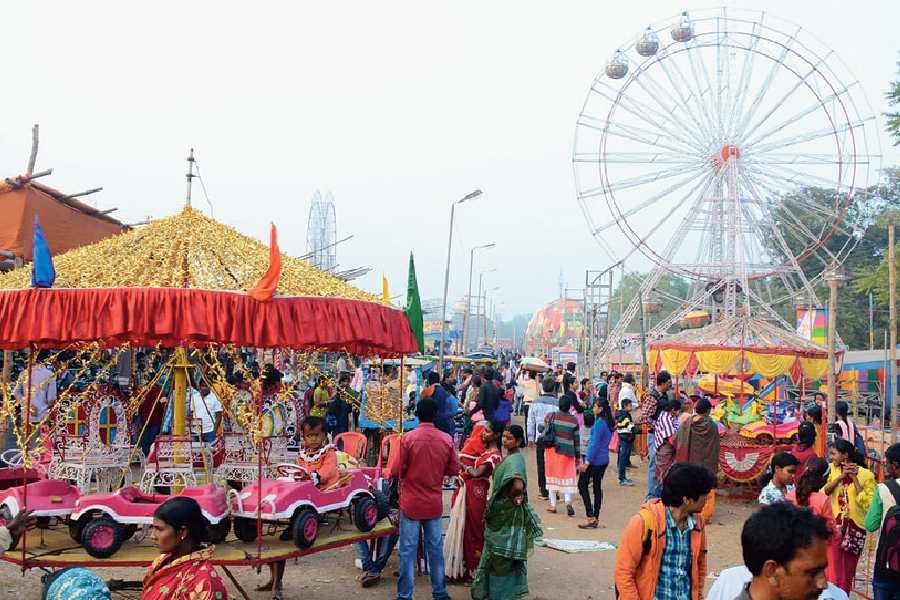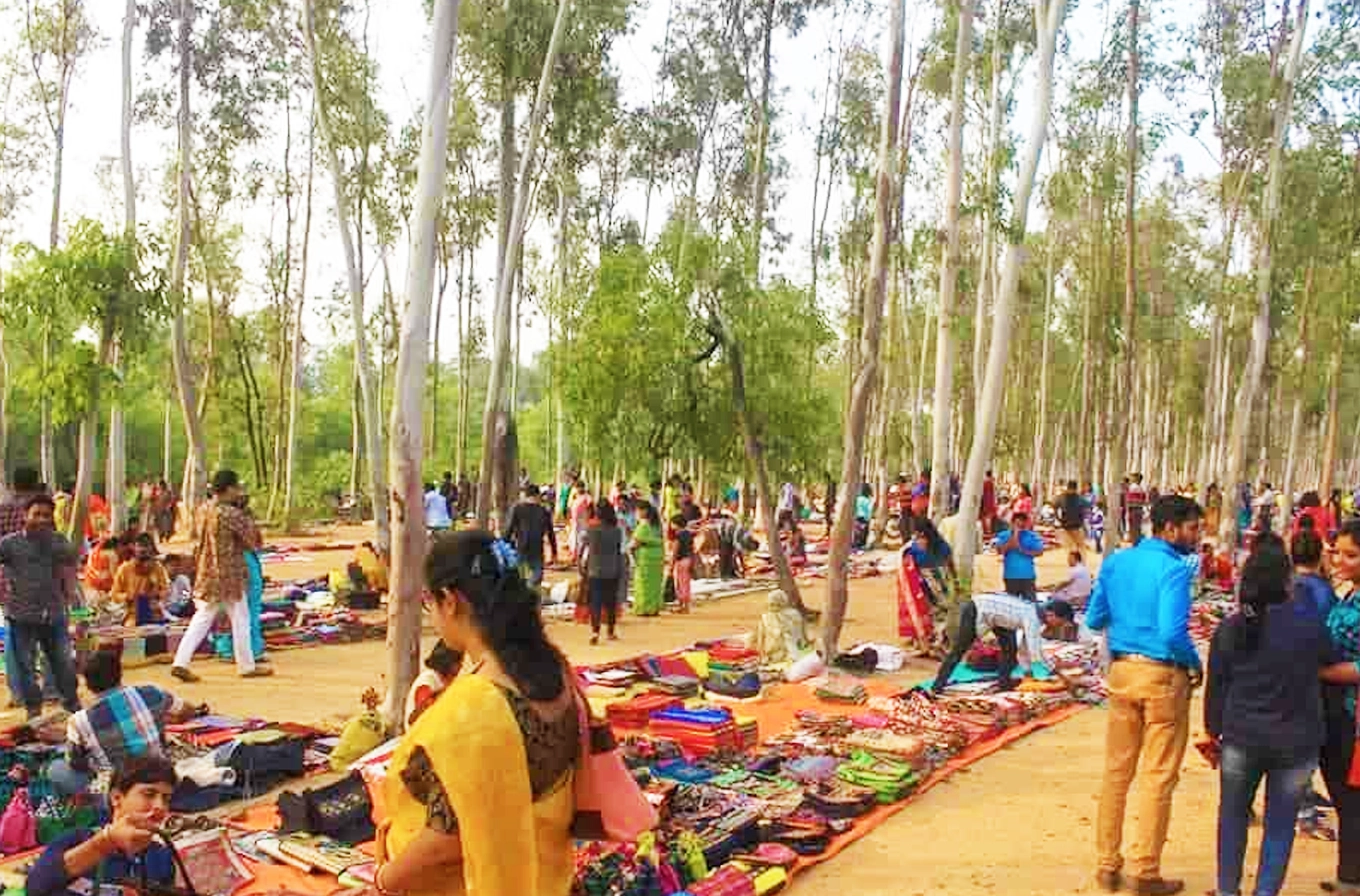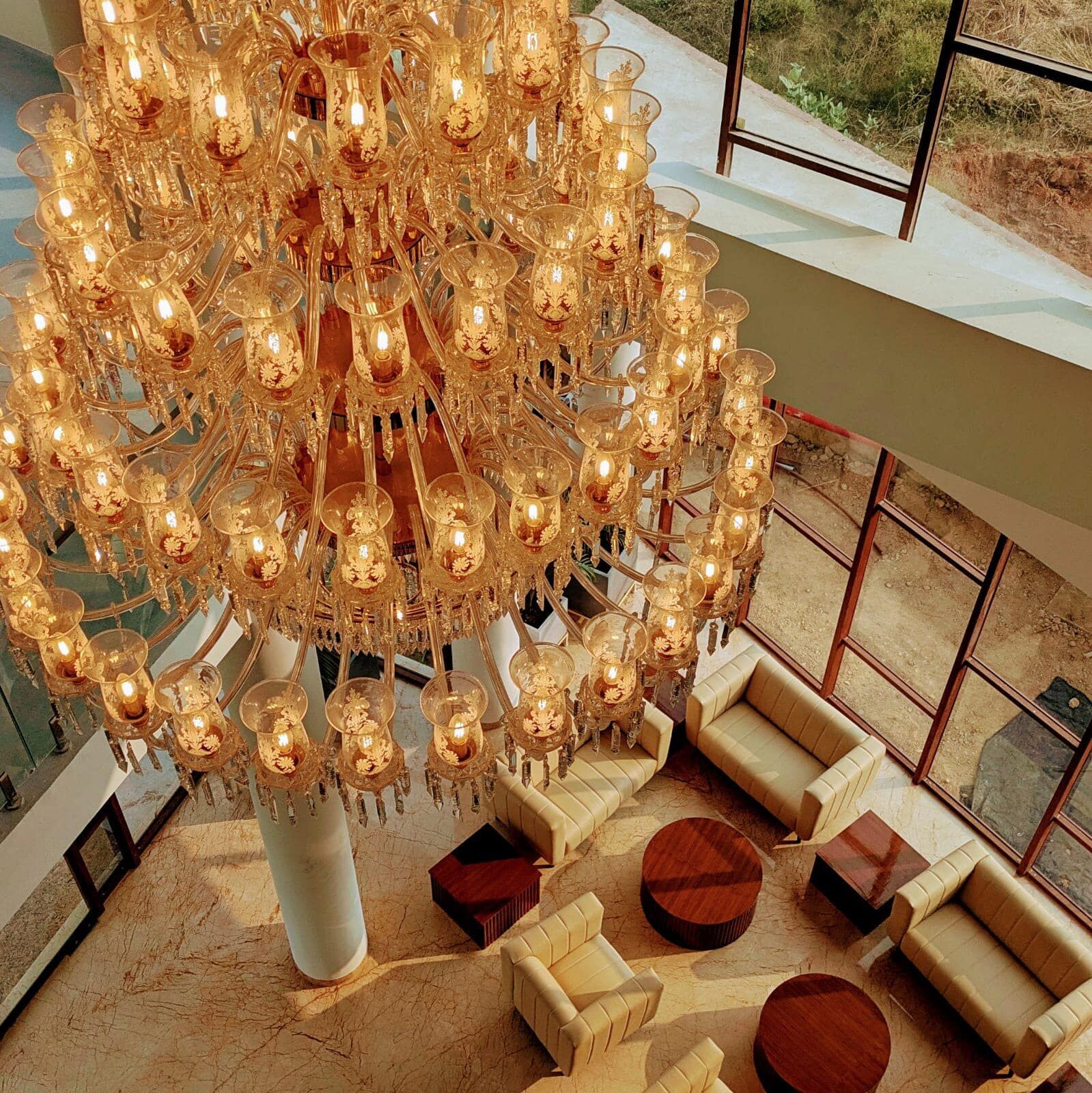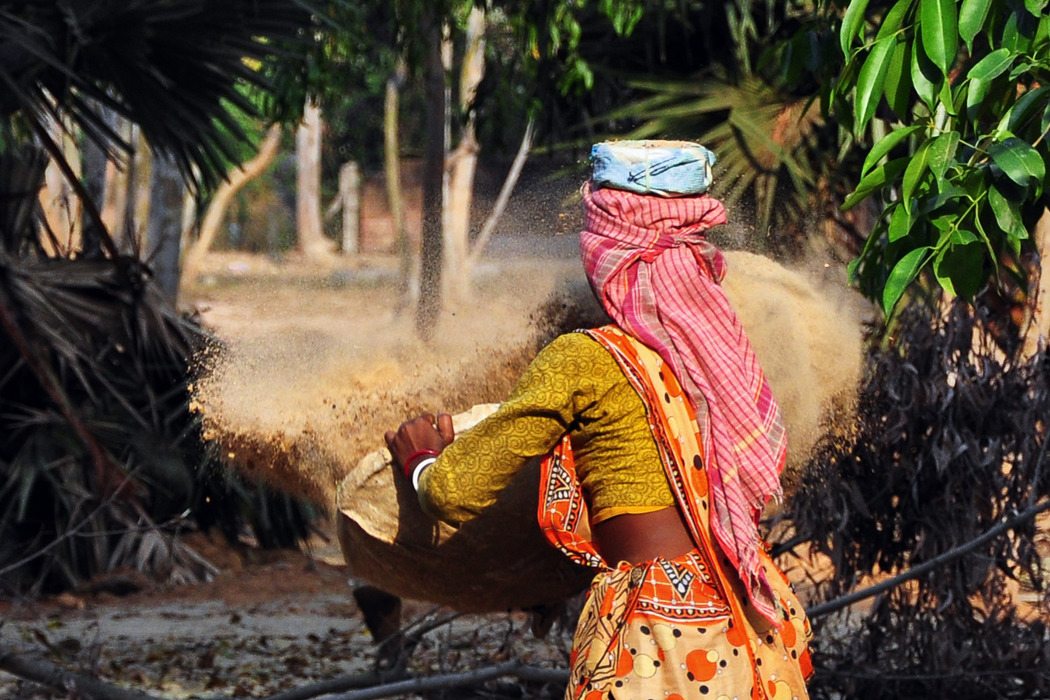Poush Mela Santiniketan – Festival & Travel Guide
1. The origins of Poush Mela
Poush Mela in Santiniketan has its roots in the late 19th century when Maharshi Debendranath Tagore, father of Nobel Laureate Rabindranath Tagore, established it to mark the foundation day of the Brahmo Samaj on the 7th day of the Bengali month of Poush (late December). This religious and spiritual gathering soon blossomed into a cultural and social festival, reflecting the vision of Santiniketan as a hub of harmony, education, and creativity.
What began as a small assembly of devotees under the canopy of nature gradually transformed into the grand Santiniketan Poush Mela we see today. By the early 20th century, Rabindranath Tagore infused the fair with music, dance, and literary performances, turning it into a celebration of Bengali art, folk traditions, and cultural exchange. Artisans, Baul singers, and rural craftsmen began flocking to Bolpur, making the fair an essential part of Bengal’s cultural calendar.
Over the decades, Poush Mela has grown into a vibrant cultural fair that attracts thousands of visitors from across India and abroad. The mela is not just about the religious significance of the Brahmo Samaj but also about showcasing handicrafts, handwoven textiles, leather goods, tribal jewelry, and folk music. The earthy tunes of Baul singers, the aroma of traditional Bengali food, and the colorful stalls make Poush Mela a unique blend of spirituality and festivity.
Today, Poush Mela Santiniketan stands as one of the most anticipated cultural events in West Bengal, embodying the ideals of Tagore’s Santiniketan—where art, education, tradition, and humanity meet. Visitors not only witness the heritage of Bengal but also participate in a fair that connects communities through crafts, performances, and soulful music.
2. When & where it happens
The fair is held every December, starting on the 7th day of the Bengali month of Poush, on the Visva-Bharati grounds. The event lasts three days, though festivities often spill over as visitors arrive early and linger after.
3. Stalls & shopping


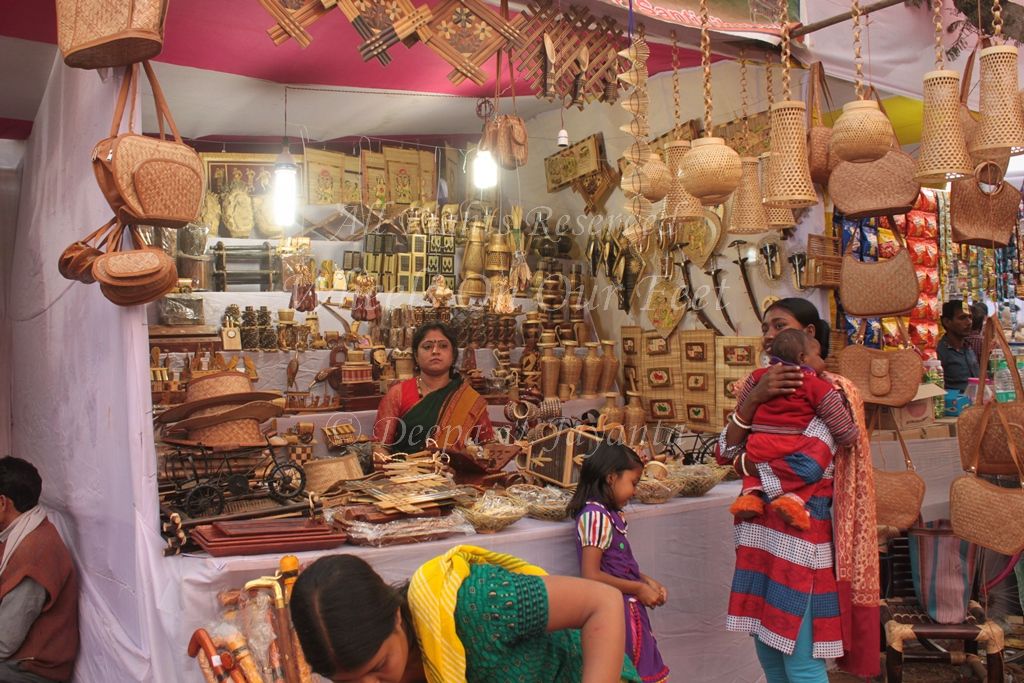
4. Cultural highlights
Baul singers in flowing saffron robes sing soulful folk songs that echo through the air, creating an atmosphere of mysticism and spiritual devotion. Their ek-tara and heartfelt lyrics carry the philosophy of simplicity and love that has long been a part of Bengal’s rural soul. Alongside them, students of Visva-Bharati University perform Rabindra Sangeet, keeping alive the legacy of Rabindranath Tagore and adding a lyrical grace to the celebrations. Dance troupes from across Bengal light up the stage with vibrant folk performances, including Chhau, Santhali dance, and traditional Bengali folk dance, turning the fairground into a carnival of colors, movement, and rhythm.
The entire Santiniketan Poush Mela becomes a living gallery of Bengal’s art and cultural heritage. Handcrafted stalls line the pathways, displaying everything from kantha-stitched textiles, terracotta art, batik prints, tribal jewelry, wooden crafts, and leather goods that Santiniketan is famous for. The sounds of Baul songs, the performances of local artists, and the festive chatter of visitors weave together an unforgettable cultural tapestry.
Every corner of the fairground radiates the spirit of Santiniketan—where art, culture, and tradition meet in harmony. For many, attending Poush Mela is not just about shopping or watching performances, but about immersing themselves in the soul of Bengal’s heritage, making it a must-visit event for tourists, art lovers, and cultural enthusiasts from across India and beyond.
5. Food & flavours

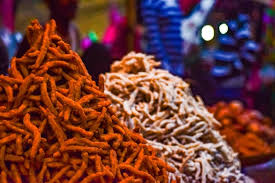

From piping hot luchi–alur dom served fresh off the pan to crunchy jhalmuri mixed in paper cones with mustard oil, green chilies, and chanachur, the fair is truly a feast for the senses. The aroma of street food fills the air, drawing visitors toward rows of bustling food stalls that capture the essence of Bengal’s winter festivities.
No visit to Santiniketan Poush Mela is complete without indulging in traditional Bengali sweets. Local favorites like soft and delicate patishapta (thin crepes stuffed with coconut and jaggery) and nolen gur sandesh—a melt-in-the-mouth dessert made from the season’s fresh date palm jaggery—are absolute must-tries. These sweets are prepared only during winter, making them exclusive seasonal treats that embody the mood of Poush Mela.
Visitors can also savor hearty snacks such as singara (Bengali samosa), ghugni (spiced yellow peas curry), and steaming cups of cha (tea) in clay cups that add an earthy charm to the experience. For those looking for something more filling, there are stalls offering traditional Bengali thalis with rice, dal, fish curry, and vegetable dishes cooked in authentic home-style flavors.
Eating at Poush Mela is not just about satisfying hunger—it’s about being part of the cultural fabric of Santiniketan. The flavors, aromas, and warmth of the food stalls perfectly complement the music, crafts, and performances, making the fair a holistic celebration of Bengal’s heritage.
“Poush Mela is not just a fair; it is Santiniketan’s soul singing in unison.”
6. Tips for visitors
Arrive early to avoid the biggest crowds, wear comfortable walking shoes, and keep cash for small purchases. Photography is welcome, but always ask artisans before capturing their work.
7. Beyond the fair
Santiniketan’s charm extends beyond Poush Mela — stroll through Visva-Bharati’s open-air classrooms, admire Kala Bhavana’s murals, or take a serene walk under the Sonajhuri trees.
8. Nature escapes
The golden Sonajhuri forest in winter, with its carpet of fallen leaves, offers a dreamy escape near Santiniketan. The quiet banks of the Kopai River provide moments of peace and reflection away from the fair’s bustle. Nature lovers can explore the Ballabhpur Wildlife Sanctuary, home to spotted deer and migratory birds. A visit to the Visva-Bharati University (Biswa Bharati campus), a UNESCO World Heritage Site founded by Tagore, adds history and culture to the journey.

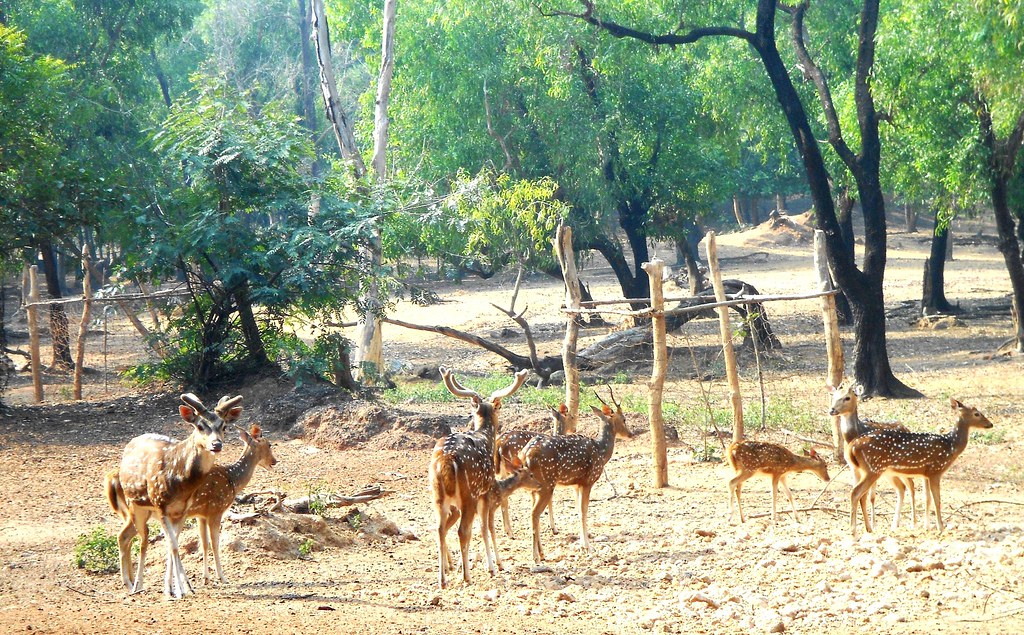
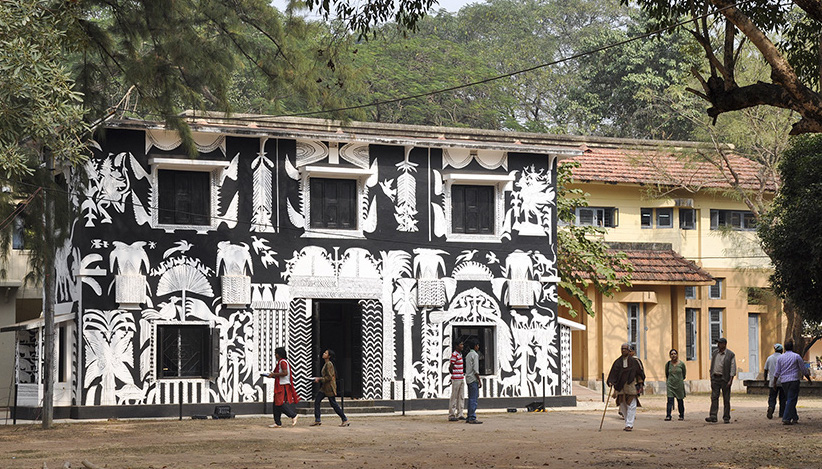
9. Crafts & markets
Visit Sonajhuri Haat on a Saturday for more handicrafts, or Amar Kutir for curated artisan work. These markets are an essential part of the Santiniketan experience.
8. How to move
Getting there: Bolpur Shantiniketan railway station connects to Kolkata; road journeys from Kolkata take roughly 3.5 to 4 hours depending on traffic.
Local transport: Auto-rickshaws, cycle rickshaws, and private taxis are readily available.
Watch this short video capturing the vibrant Santiniketan Poush Mela 2023 at Sonajhuri Haat.
9. The Pearl Club Resort
Set a short drive from the main campus and the Sonajhuri woods, The Pearl Club Resort is a gardened world of comfort and careful design. It is a property that understands silence and celebration in equal measure: a pool that holds the sky’s reflection, a garden where morning yoga loosens time, and public spaces that feel both private and welcoming.
Luxury, thoughtfully delivered
The Pearl Club Resort offers multiple accommodation styles to suit different kinds of travellers:
- Premier Rooms: Elegant rooms for solo travellers and couples with large windows, king/queen beds, modern ensuite bathrooms, and handcrafted furnishings.
- Private Bungalows: Standalone bungalows with private verandas, open courtyards, and room for up to 6 guests — ideal for families and small groups seeking privacy.
Facilities & experiences
Amenities include an infinity pool, a garden and lawn, a well equipped gym, a games room with pool, snooker, tennis etc and melodious baul nights.
The staff — people who turn stays into stories
What makes The Pearl Club Resort more than a place to sleep is its people. The concierge remembers returning guests and arranges small surprises; the chef sources local ingredients and recreates family recipes with a refined touch; the housekeeping staff add delicate, human details — a sprig of marigold, a handwritten note, a familiar cup placed just so. Behind the scenes the maintenance crew and night team keep the property safe, serene, and immaculate.
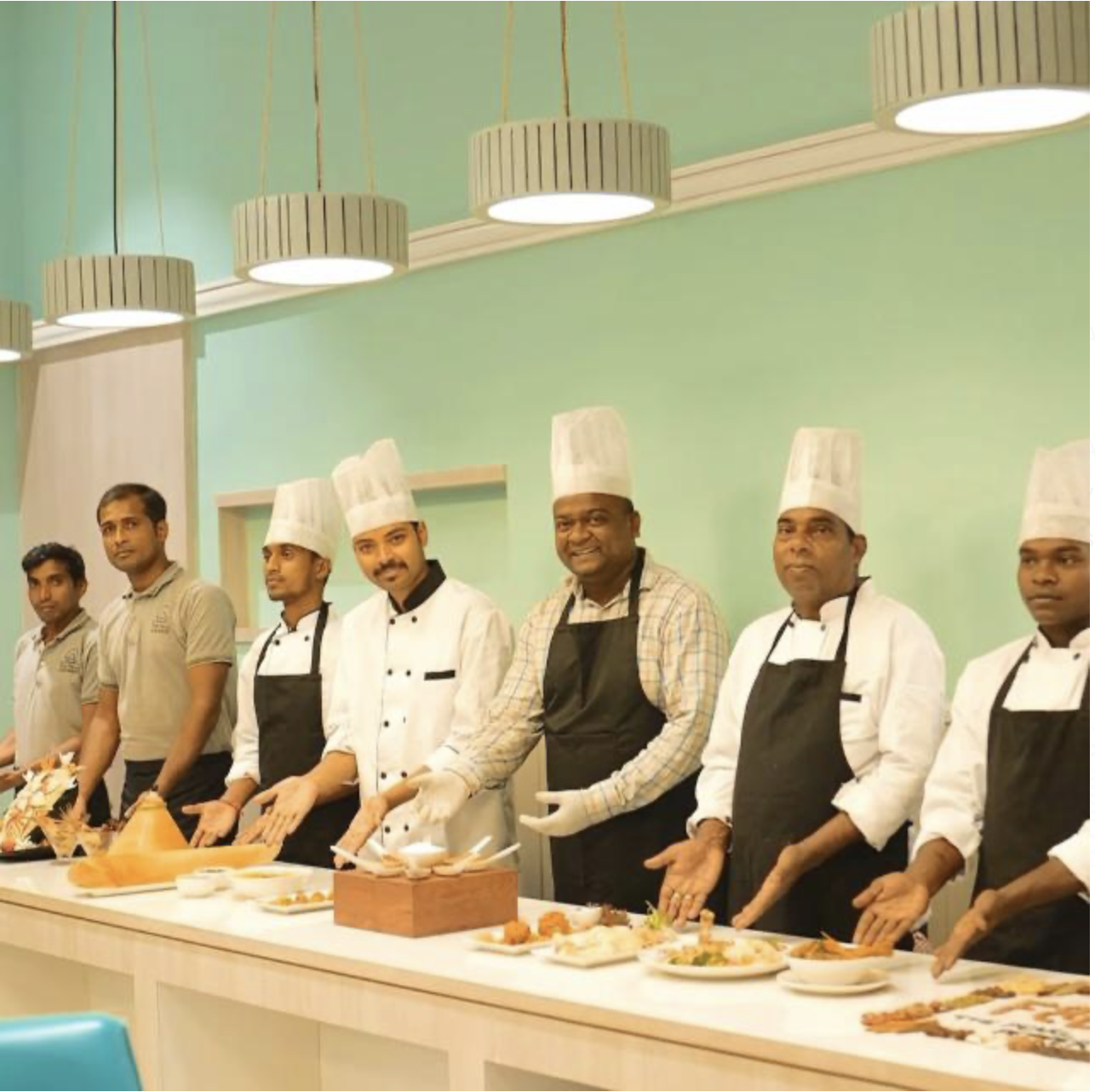
They are not service staff; they are storytellers and caretakers. They notice when a guest prefers early tea, arrange a private baul performance on a birthday, or help an elderly guest climb stairs with quiet patience. They work round-the-clock not because they must, but because they take pride in being part of someone’s memory.
10. A suggested slow itinerary (3–4 days)
- Day 1: Arrive, settle into The Pearl Club Resort, walk the garden, early dinner and an open-air music session.
- Day 2: Morning at Visva-Bharati (Patha Bhavana & Kala Bhavana), lunch at a local homestay, afternoon at Poush Mela to explore crafts, food, and cultural performances.
- Day 3: Workshop (batik or pottery) at Amar Kutir, afternoon birdwatching at Ballabhpur Sanctuary, and evening watching fireworks at Poush Mela .
- Day 4: A dawn walk by Kopai river, checkout after a late brunch, with a packed picnic from the resort for the road.
11. Responsible travel & how to give back
Buy directly from artisans, avoid single-use plastics, and respect campus rules. Consider donating to local craft cooperatives, or booking a workshop where fees go directly to artisan groups — small acts that compound into real support.
12. Why this will stay with you
Santiniketan asks only that you slow down. When you do, the land returns your attention with layered textures: songs, smells, and faces that will follow you home. The Pearl Club Resort collects these moments and offers them back with care. This is not a hotel where you pass the night — this is a place you will carry with you, the kind of place whose memory becomes part of your being.
13. Practical information
Nearest airport: Kolkata (Netaji Subhas Chandra Bose International Airport) ~170–190 km. Rail: Bolpur Shantiniketan station.
Best time: Oct–Mar for festivals and cool weather.
14. Booking & special experiences
For bespoke stays — wedding packages, cultural retreats, or private workshops — contact The Pearl Club Resort concierge. They design itineraries that stitch together the town’s stories with comfortable, beautiful stays.
